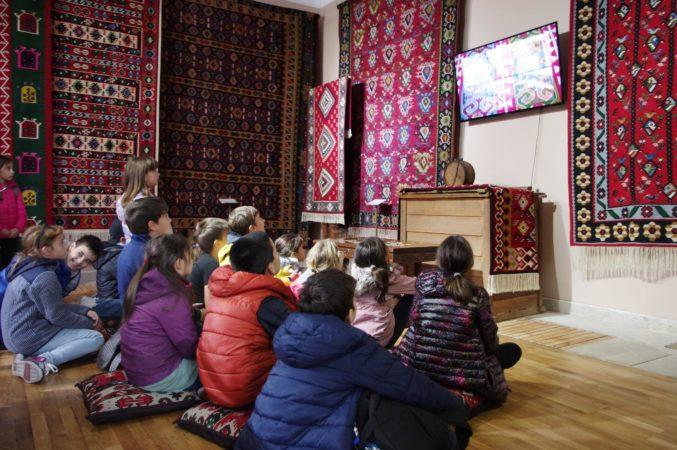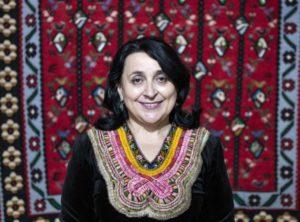
Craftsmen are those Bulgarians who captivate with their dexterity, keep the traditions and pass them on from generation to generation. Their hands are like gold – if they touch something – they create magic. Their diligence is proverbial – do they work as if time does not stop for them. The end result is often magical. Then you realize – these people seem to be able to “put” you on a time machine and show you the wonderful world of Bulgaria.
The team of Iskra.bg embarked on revealing the secrets of the famous not only in the homeland, but also in the whole world Chiprovtsi carpets. They made us speechless in front of the beautiful colors with which they are painted, in front of the natural materials from which they are made. Let us worship the talent, knowledge and dexterity of those who create them.
For this reason, we looked for one of the greatest connoisseurs of this art – the director of the Historical Museum – Chiprovtsi – Dr. Anita Komitska. Here is what she told us about them, their history and the production process:
Scientists are still debating the beginnings of carpet weaving. In recent years, the thesis of a very early period for the production of the Chiprovtsi carpet has emerged. Some scholars say that the beginning is associated with the Thracian tribe Tribali, which inhabited the region. Others believe that the compositional shapes and colors are reminiscent of the ancient Asian carpet – that of the Caucasus. However, the tradition of weaving this product is centuries old and this is an indisputable fact. For this reason, the skill of making them has received worldwide recognition from the United Nations Educational, Scientific and Cultural Organization (UNESCO), for which we are very proud and grateful.
This happened thanks to the work of a team from the Bulgarian Academy of Sciences (BAS), headed by Corresponding Member. Prof. Dr. Assoc. Mila Santova, who have prepared a wonderful dossier and film about the merits of this product.

Anita Komitska clarified that the production of the Chiprovtsi carpet is primarily related to the breeding of sheep in the region, the wool and its processing:
The oldest Chiprovtsi carpets, which are preserved in our museum, are from the beginning of the 18th century. They are dyed with natural dyes, which is the oldest technology and provides durability of the carpet and an exceptional softness of tones. We acquired them through donations from other connoisseurs.
A curious fact is the unwritten rules. They say that weavers do not sit down to work if they do not feel in harmony with themselves, if they are sick or there is something that disturbs their soul.
Komitska clarified that chemical paints in their manufacture entered the 20th century and give greater brightness, intrusiveness and expansiveness. In the last two decades, however, the people of Chiprovtsi have returned to natural dyeing:
The local teacher Nikola Nikolov together with Japanese volunteers published books on natural dyeing. This further restored people’s interest in the traditions of this craft. Today, if someone decides to order a Chiprovtsi carpet, they can get it made using the oldest technology, as well as created with the colors of nature.
The director of the History Museum shared that the interest of our society in these products is really growing, and there are two large manufacturers. The owners offer a visit to the homes and binding the design of the new bed, according to the interior, which is very much liked by the consumers.
According to her, in the 70s and 80s of the last century they were spread in state institutions and institutions, as well as in kindergartens:
“Maybe we should wake them up to turn to this practice again.”
In Chiprovtsi, however, there is another problem – fewer and fewer women are engaged in weaving. The difficulty is due to the aging population and the depopulation of smaller settlements.
However, the Mayor of the Municipality has thought about what is happening and already has the idea to restore the weaving class at the Chiprovtsi school, which will stimulate children from all over Bulgaria to learn this craft:
„Perhaps, if we succeed in carrying out this plan, the craft will not perish. There are still people who can teach teenagers, and the site has a wonderful base. In the Museum we have built a modern exposition, which focuses on the hall with carpets. Here visitors can sit on the camp and try to build some of the motifs of this product. We also do demonstrations, if the groups have the desire, we have a corner for children where they can enjoy themed activities.“
Apart from them, people are paying more and more attention to the clothes, which have elements of folklore motifs. More and more often we can meet citizens who go to work, a restaurant or a cultural event decorated with such an ornament.
Aren’t old traditions the new fashion?
We are looking for an answer to this question with Dr. Komitska, who has lived in the capital for many years. She had the honor to work at the National Ethnographic Museum of BAS.
She was fascinated by the Bulgarian traditional costumes, the selection of the individual parts of the costume, the work done by the old Bulgarians and their sense of space and the surrounding nature:
“The workmanship just makes you think about what these people were like – what knowledge they had, how they lived and what a strong sense of harmony they carried within themselves.”
She explained that she would never forget the story in which a blind man went to the museum – a foreigner who wanted to buy a Bulgarian costume. They had no practice of selling, and she took him to an antique shop. There the woman who was with him told him about the colors and the decoration:
“He stroked the dress and said how beautiful it was! Then I said to myself that we have remained blind for a long time to the heritage that the old Bulgarians bequeathed to us. I returned to Chiprovtsi, which is also my hometown and I believe that we should talk about Bulgarian art and crafts. Let us pass this love on to the next generations.”
She called us to look at pottery, goldsmithing, textiles and everything created by the old Bulgarians, because it is an expression of the thinking of those who created it:
“I always tell myself that so much beauty cannot be created by people who do not carry light in their souls or are not filled with love for our neighbor and our country, with all the virtues that define and unite us as a people. A person full of hatred or negativism cannot produce such magic.”
One of Komitska’s dreams is to impose a Bulgarian style in fashion. All her formal clothes are with Bulgarian embroidery:
The impetus for this came to me from an exhibition in Tokyo, Japan. The organizer of the event came to the official dinner with a blouse made with Bulgarian embroidery. Then I said to myself that everything else a person wears is somehow weirder. The Japanese wear kimonos at official ceremonies. The Scots are proud of their box. It is not bad to think for ourselves, because traditions are the value that keeps us strong as a nation.















